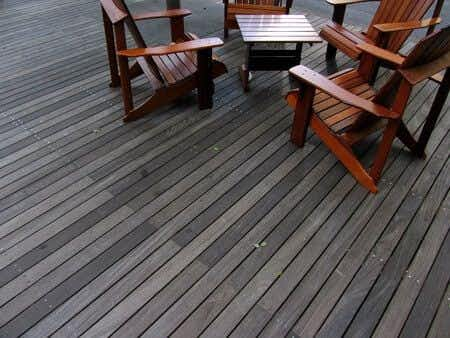This case involves a collapsed deck at a lake house. A group of twelve college students were spending their spring vacation at a large lake house. The students and their friends, a party of 25, were socializing on the house’s 11’ by 14’ wooden deck. Around midnight, the group gathered along the outside railing of the deck to take a group picture. The deck detached from the house, and collapsed into a pile of splintered wood in the backyard. Many of the students were injured, including multiple broken arms, legs, and several who sustained serious head and back issues. It was reported that the wooden deck never underwent non-destructive testing to assess any possible weaknesses or defects.
Question(s) For Expert Witness
1. What structural imperfections could have led to such a collapse?
Expert Witness Response
There are several aspects of a deck that could lead to a collapse from inadequate supports to undersized lengths of flooring. Additionally, while many deck collapses occur due to overcrowding, a deck of that size should have been able to accommodate the weight of about 40 people, much less 25. When the students moved their combined weight to the edge of the deck and stopped, their momentum was transferred to the screws that held the deck to the house. That movement was just enough to overcome the friction holding the fasteners to the house rim joist. If this house was built to accommodate a deck, generally the floor joist system of the house was constructed to support a deck and the framing contractor prepares the point of attachment for the loads associated with deck use. When a deck is bolted to a house, the strength and durability of the attachment depends primarily on the ability of the rim joist of the house to transfer the load to the house foundation. Judging by the facts of the case, the problem probably lies in both the fasteners that attach the deck to the house and the inability of the rim joist to resist the pull out force exerted by the deck. A full review of the house, the remainder of the deck, and the blueprints for the house would reveal the issues with the deck.
About the author
Michael Talve, CEO
Michael Talve stands at the forefront of legal innovation as the CEO and Managing Director of Expert Institute. Under his leadership, the Expert Institute has established itself as a vital player in the legal technology arena, revolutionizing how lawyers connect with world-class experts and access advanced legal technology. Michael's role involves not only steering the company's strategic direction but also ensuring the delivery of unparalleled intelligence and cutting-edge solutions to legal professionals. His work at Expert Institute has been instrumental in enhancing the capabilities of attorneys in case preparation and execution, making a significant impact on the legal industry's approach to expert consultation and technological integration. Michael's vision and execution have positioned the Expert Institute as a key facilitator in the intersection of law and technology.



